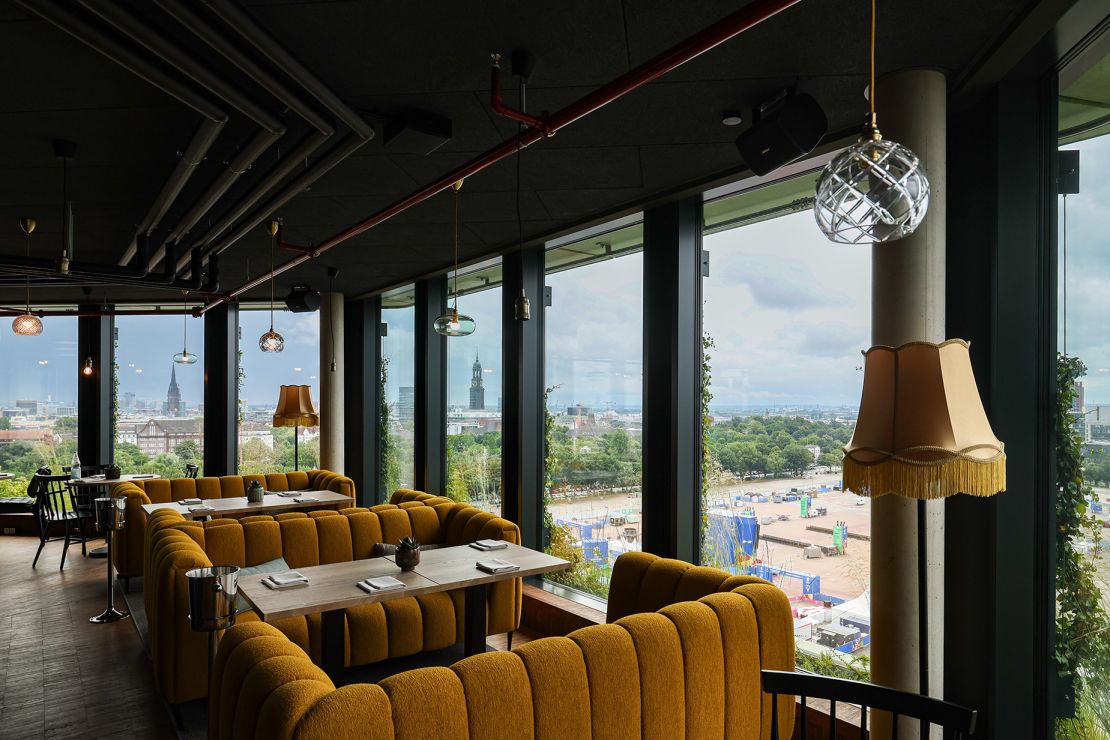At 58 meters tall – just a little taller than the Leaning Tower of Pisa, but with considerably more heft – the St. Pauli bunker in Hamburg, Germany, has dominated the city skyline for just over 80 years.
Built using forced labor during Adolf Hitler’s Nazi regime, it’s a relic of the darkest period in Germany’s history – but this concrete hulk has had a surprising rebirth.
The relaunched Hamburg Bunker is now packed with two restaurants, a five-story Hard Rock Hotel and a newly built pyramid-like rooftop bar and garden from which greenery flows abundantly over the concrete facade.
The REVERB by Hard Rock is a fitting addition to a city with an impressive musical history – this is, after all, where The Beatles began their career at the start of the 1960s.
The Karoviertel neighborhood in which the fortress-like bunker sits is a cool enclave filled with stylish coffee shops and vintage stores, plus the Knust nightclub in a repurposed abattoir.
The amenities
Rooms in the 134-key REVERB range from 180 euros for a classic room, with amenities including a 55-inch flat screen TV and Alexa in-room assistant, to 269 euros for a suite with sweeping citywide views.
The hotel also has the kind of modern details you’d expect in any self-respecting hip hotel, such as self check-in, smart technology and co-working spaces.
You don’t have to be a hotel guest to enjoy the bunker’s amenities, however. On the ground level, there’s the Constant Grind coffee shop and bar, and a Rock Shop for those seeking Hard Rock merch.
Bar-restaurant Karo & Paul, by German TV chef Frank Rosin, opened as a bar in April 2024 and occupies the first three levels of the building. The restaurant area is still coming soon.
The restaurant La Sala – Spanish for living room – is open for business on the fifth floor, offering lofty views and an international menu.
Finally at the top is the Green Beanie roof garden, with bar and walkway looping round the building, which can be accessed by the public for free.

The challenge
The Hamburg bunker was one of eight flak towers – above-ground anti-aircraft bunkers which doubled as air raid shelters – which Germany built after British air raids on Berlin in 1940.
The history the Hamburg Bunker wears is heavy, but a 76,000-tonne concrete behemoth with walls 2.5 meters thick can’t be easily demolished or ignored.
The only flak tower to have been completely destroyed is one at Berlin’s zoo, as the others are in heavily populated areas where the explosives involved would be too great a risk, AFP reports.
“The idea of raising the height of the building with greenery was to add something peaceful and positive to this massive block left over from the Nazi dictatorship,” Anita Engels, from the Hilldegarden neighborhood association which supported the project, told AFP.
The association has helped with this new chapter in the Hamburg flak tower’s history by collecting testimonies from people who lived in the wartime bunker as well as records of the hundreds of forced laborers who built it.
An exhibition on the first floor now tells the full story of the building’s history.
Credit: Source link